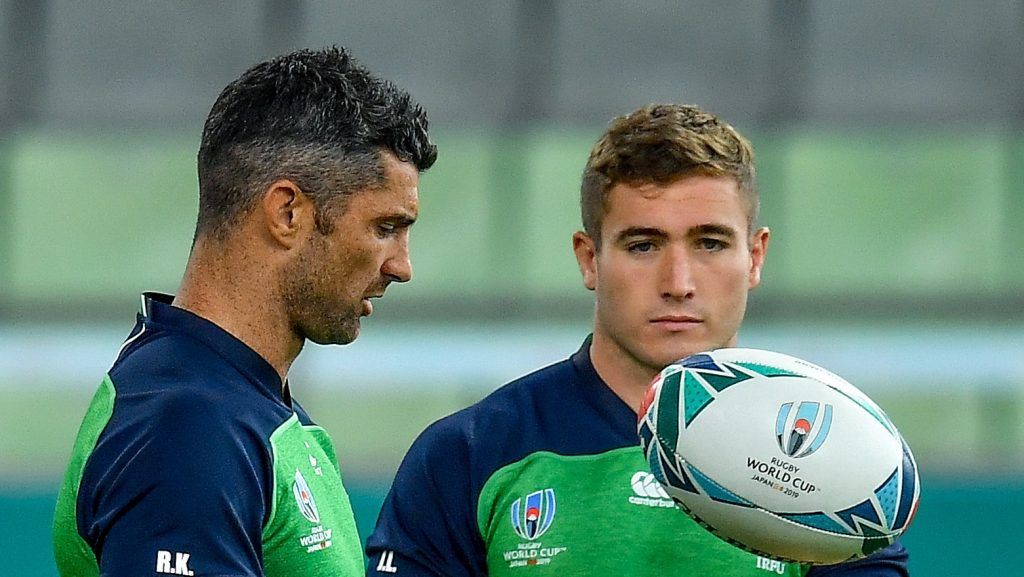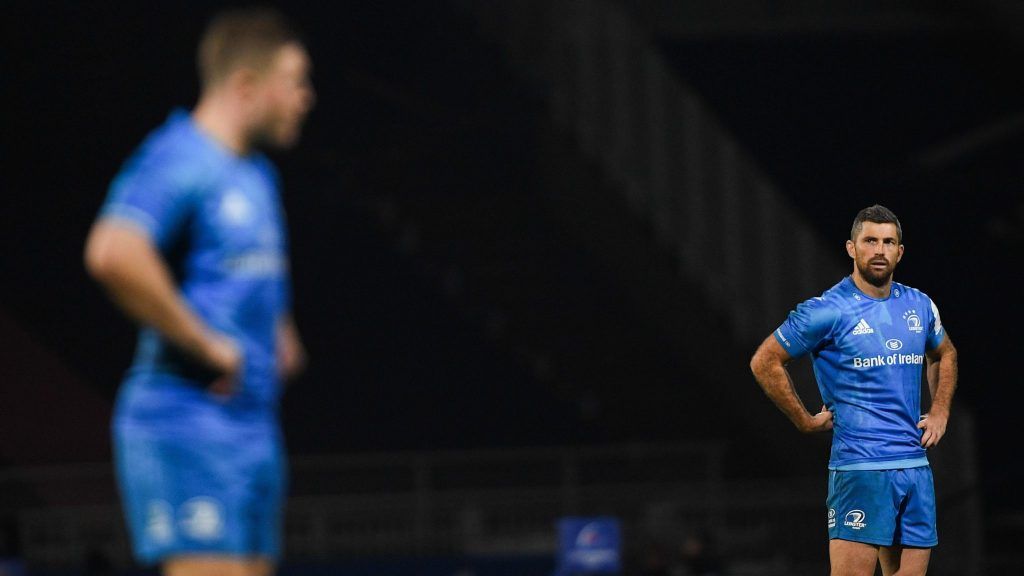Eaten bread is soon forgotten.
Do you know the feeling of being perfectly warm and comfortable on a couch, and something changes? A pillow gets moved, you shift your foot slightly or a pet hops into the mix, and no matter how perfectly you replicate that position, it isn’t the same? It just isn’t as comfortable? The Irish rugby team is about to get that feeling.
Rob Kearney may as well have had the number 15 tattooed on his back for the last 10 years when it came to Leinster and Ireland. It’s strange, in a way, that his absence from Andy Farrell’s first Irish squad yesterday was largely expected.
The end of a World Cup campaign often lends itself to a natural conclusion for some players’ careers. The desire for new faces, fresh starts and “getting ready for four years time” often sees stalwarts fall by the wayside. But while the likes of Johnny Sexton, Keith Earls, Cian Healy and brother Dave all made the cut; Ireland’s most dependable man of the last 10 years was conspicuous by his absence in yesterday’s announcement.
Time, and Jordan Larmour, caught him in the end.
"We're going to put this to bed right now. Rob Kearney is the best full back that's played for Ireland.
"He starts every single day of the week. We need him to control the game.@StephenFerris6 on RTÉ is confident of a big one from his old teammate Rob Kearney 👌 pic.twitter.com/lFTKzDavjl
— SportsJOE (@SportsJOEdotie) October 19, 2019
Versatility has become a key word in rugby in the last decade. As the game became more and more attritional, and injuries all the more common, the need for players to be able to step into more than one jersey has almost registered as a standard requirement. As a result, the number of specialist positions has dwindled somewhat across the board.
That being said, the tight five continues to be largely set in stone. Tighthead and loosehead props, as well as hooker, remain positions that you’re almost born into. Andrew Porter is an exception, rather than the rule, and is capable of playing in both the 1 and 3 jerseys, arguably giving him the edge at times when it comes to bench selection. Of the four second rows named by Farrell yesterday (Ultan Dillane, James Ryan, Devin Toner and Iain Henderson), only Henderson has an ability to shift into the back row, although Tadhg Beirne’s absence alters those numbers somewhat.
The back row itself, again with three specialist positions, has become largely interchangeable in recent years depending on players’ availability. The likes of CJ Stander, Josh van der Flier and Peter O’Mahony exemplify a manager’s dream ticket, with each of them playing a minimum of two positions from 6-8. Considering Ireland’s recent rotten luck with backrow injuries, it’s been a case of next man to the front line at times, and the ability of players to move across positions has won Ireland key games.
It’s the backs where things become really interesting.
Andy Farrell named 16 backs in his squad yesterday, a blend of experience and youth that was to be expected in the first campaign following a World Cup, especially one as disappointing as Ireland’s was last year. In a squad where a number of players were conspicuous by their absence, Rob Kearney stood out as arguably the biggest casualty, even if it was to be somewhat expected.

Kearney will turn 34 soon after the 2020 Six Nations concludes. It’s realistic that he will not be wearing a green jersey for the World Cup in 2023. He has fallen behind Jordan Larmour in the Leinster pecking order since their return from Japan. If Farrell is building for the future, Kearney is a logical absentee from his future plans. No one can argue with any of that.
Kearney can only play fullback. That’s not a slight on him, by any stretch of the imagination. He owned the 15 jersey like no player in world rugby ever has. He had a skillset perfect for it, and Ireland and Leinster have benefited from it year after year. It is arguably his greatest strength, and focusing on that one position surely aided his ability to remain as evergreen as he did. Literally.
But it’s a double-edged sword.
If he isn’t starting, he’s not on the bench because he can only cover that position, hindering Andy Farrell if any of 11-14 get injured early on in a game. It happened in Joe Schmidt’s ill-fated decision to put Robbie Henshaw at fullback in England’s demolition of Ireland in the Aviva Stadium last year. Kearney dropped out of the 23-man matchday squad, Ireland were pummelled by a rampant England side. Kearney returned at 15 against Scotland the following week, albeit Schmidt’s hand was forced by a Henshaw injury. We got a rare glimpse at a world without Kearney, and it wasn’t pretty.
Of the 16 backs named by Farrell yesterday, 7 of those have experience playing at fullback; Larmour, Dave Kearney, Robbie Henshaw, Will Addison, Jacob Stockdale, Andrew Conway and Keith Earls. Interestingly, only 3 of those (Stockdale, Larmour and Addison) all have minutes at 15 this season for their provinces. All 7 of Addison’s appearances for Ulster have come at fullback, 2 of Stockdale’s 7 outings and all but one of Larmour’s Leinster games have begun at 15, with some shuffling involved. Addison’s only Ireland appearance of the 19/20 season (against Wales in a World Cup warm-up game) also came at 15, while Larmour showed his mettle at 15 for Ireland’s opening RWC pool game against Scotland and could easily have started against New Zealand.
That versatility runs right the way through the backs selected yesterday. Taking out the 6 half-backs, all of the 10 remaining can play across at least two positions. 26 positions in total are covered, ranging from 11 to 15. Had Kearney been included, he would have been the only back (outside of outhalfs and scrumhalfs) who couldn’t slip on a second jersey. That was fine, as long as he was guaranteed to start, but that just isn’t the case any more.
Considering the make-up of a substitute bench in rugby these days, there are usually 3 slots of the 8 reserved for the backs, even if South Africa debunked that en route to the Webb Ellis trophy last Autumn. Once the two half-backs take their seats, one remaining place has to be taken by a player who can cover more than one position, particularly in top-level Test rugby. That Kearney can’t play the utility role may once have been his greatest strength, but the modern game dictates his international career seems to have ended sooner than it might have in another era.
Very few players go out on their own terms in the modern game. Even fewer get the year-long goodbye that Brian O’Driscoll did. It’s possible that we will see Rob Kearney in an Irish jersey again, should form or injuries dictate it. He was often the unjustified lightning rod for criticism of Joe Schmidt’s teams. He emphasised many of the easily targeted hallmarks of Irish rugby in that time; dependable, safe, consistent. But, like times before, we may only realise just how good he was now that he’s gone. Ireland may not find that comfort zone again for a few years.




























